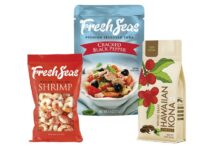According to a 243-page report by Transparency Market Research (TMR), the global flexible packaging market is projected to expand at a CAGR of 5% during the forecast period from 2019-2027.
The report states that the flexible packaging market in Asia Pacific is estimated to hold a dominant position in terms of market share, estimated to be 41% in 2019 and 45% by the end of 2027 globally. India and China, together, would account for 57% of the APAC flexible packaging market in 2019.
The need for convenience packaging is said to be the ongoing trend in the flexible packaging market in the Asia Pacific region. The packaging type that could increase the barrier property against the external environment, along with providing sustainability, would raise the sales of flexible packaging in the market, the report stated.
The increasing demand for flexible packaging from Asia Pacific has propelled the growth of the market in the region, which, in 2018, accounted for over one-third of the revenue share of the global market, and is expected to expand at 6% from 2019-2027. The growth of the flexible packaging market in APAC can be attributed to several factors, including the rise in per capita demand for packaging from developing countries, concentration of producers of flexible packaging in the region, and increasing demand for sachets and stick packets.
However, the flexible packaging market in North America also occupied a significant share of ~28% in the global landscape in 2018, and is likely to grow at a CAGR of ~5% over the forecast period. Pouches, sticks, and sachets are expected to remain popular within the North America market, thereby driving its growth.
According to the TMR report, North America holds approximately one-fourth of the global flexible packaging market share. However, it is expected to experience less growth as compared to the market in the APAC region.
Adoption of biodegradable products
The study found that in recent years, the push to reduce the negative impact of certain types of packaging on the environment has had an influence on every industry. Stakeholders in the flexible packaging market are said to be looking into the use of newer and different materials to align with this goal, including environment-friendly bio-based materials and biodegradable plastics.
The research also found that the reason for companies adopting sustainable packaging and biodegradable raw materials come from shifting consumer trends, which is likely to have a positive impact on the growth of the global flexible packaging market. Bioplastics held a market share of USD 3.8 bn in 2018, and this segment is expected to grow at a CAGR of 5% during the forecast years.
Inclination towards multilayer films
The consumption of multilayer films has increased across various end-use industries. According to TMR, the shift in preference from single-layered films to multilayer films comes with various advantages, which include extended shelf life without losing product fragrance and quality, along with reduced chances of contamination. These multilayer structures are produced through the processing of commodity plastics such as polyethylene and polypropylene, centre barrier resins, and tie resins, through their respective extruders.
Growing demand from food sector
According to the study, the food sector has been the largest end user of flexible packaging. In 2018, it held a 30% share of the global flexible packaging market. This is expected to rise at the rate of 5%, and the food sector is likely to continue to hold the largest chunk of the revenue and sales in the market. This could be attributed to several benefits, including lowered production and transportation costs, customisable barrier properties, and protection of product integrity offered by flexible packaging.
However, the pharmaceutical industry is gaining significance in the flexible packaging market, and it is projected to grow at 6% from 2019 to 2027. Customisable packaging, recyclability, and convenience are the major factors that have contributed to the growing popularity of flexible packaging in the pharmaceuticals sector.
Key research findings
According to the TMR study, the global flexible packaging market is dominated by manufacturers based in Europe and the APAC regions, in terms of market share. The markets in MEA and APAC are anticipated to experience CAGRs of 5% and 6% respectively, during the period of 2019-2027. India and China are dominating markets in the APAC region.
Manufacturing companies of flexible packaging are engaged in innovations to improve the material used in the packaging of food products, and the introduction of sustainable, fully-recyclable, and high-barrier flexible packaging, with overall cost savings.
Innovations are ongoing in flexible packaging solutions that can lower the amount of carbon footprint and overcome handling hurdles, the report stated.



























